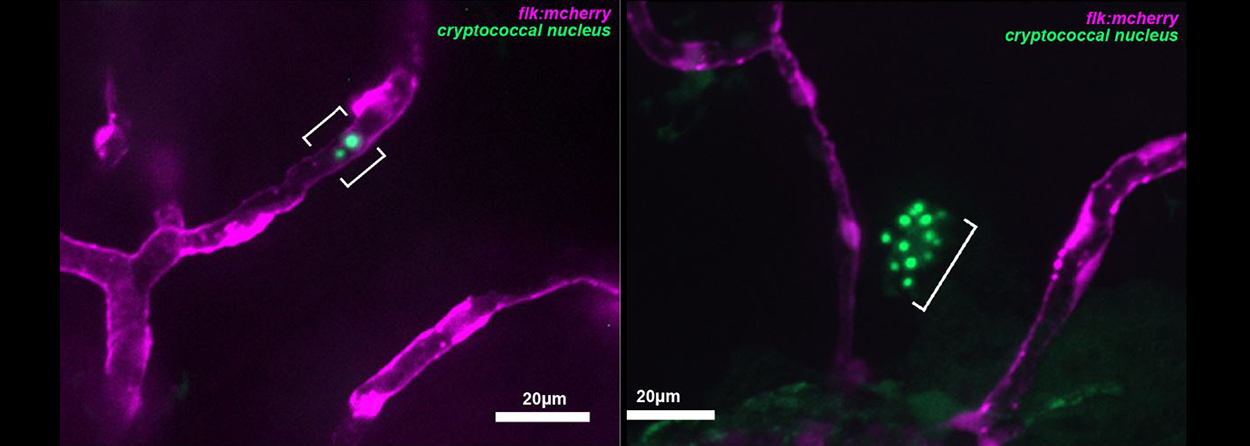Breadcrumb
- Home
- About
About
Many fungal and bacterial pathogens cause disease by adapting to life in the host and disseminating from one tissue to another. Cryptococcus neoformans is a classic example. This environmental fungus is often inhaled by humans but rarely causes disease without underlying immune compromise. The initial site of colonization is the lung, where the fungus may simply be cleared, or it may persist indefinitely, presumably in chronic host structures called granulomas (granulomata, to use the Greek). When not constrained by a functional immune system, fulminant replication in the lungs results, often followed by bloodstream infection. While pathogens in the bloodstream pass through many tissue types, Cryptococcus is uniquely prone to settling in the central nervous system, where it causes a severe infection which is fatal if not treated. In the Davis laboratory, we study how the fungus responds to initial contact with the immune system and how how it is so characteristically found in the brain.

